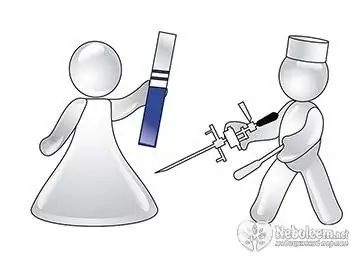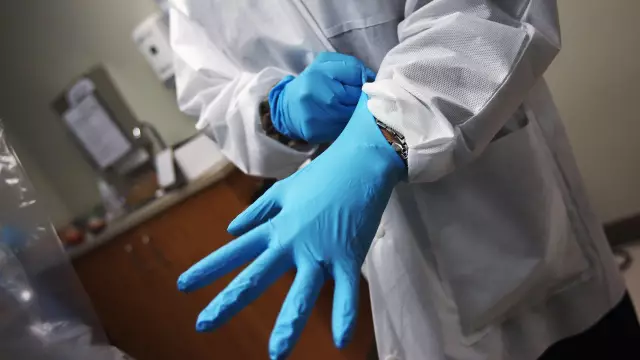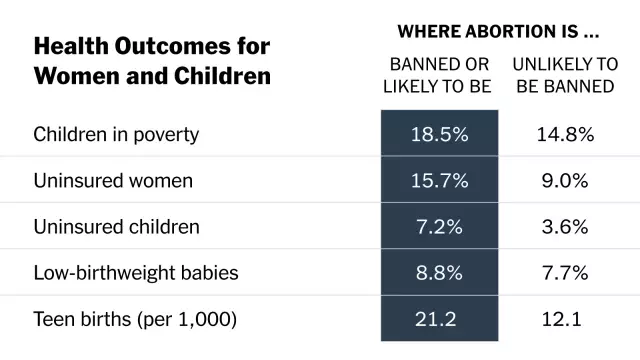- Author Rachel Wainwright [email protected].
- Public 2023-12-15 07:39.
- Last modified 2025-11-02 20:14.
After a medical abortion
After a medical abortion, various complications can occur, so you should regularly visit a gynecologist and undergo diagnostic examinations.
Discharge and bleeding after medical abortion

After a medical abortion, a woman's body is in a weakened state, immunity decreases, and the risk of infectious diseases increases. In order to prevent the development of complications, it is necessary to monitor the discharge after medical abortion.
The first discharge usually appears 3-4 days after surgery. If the discharge after medical abortion is yellow or green in color with an unpleasant odor, then it may be the result of a genital infection.
Brown discharge after medical abortion, which is not accompanied by itching and burning, can last 5-10 days. The color of these secretions is due to the small amount of blood that is secreted from the uterus. Brown discharge with a pungent odor and pulling pain in the lower abdomen can be a sign of endometriosis, which should be treated immediately to avoid pathologies and miscarriage during the next pregnancy.
Minor bleeding after medical abortion is normal after surgery if it does not cause pain and is not profuse. Heavy bleeding may indicate serious complications, endometriosis, and polyp formation.
Bleeding after a medical abortion can last up to 30 days, which is the norm necessary to restore the functioning of the reproductive system and normalize the hormonal background of a woman.
Discharge after medical abortion, which is yellow, can be caused by the accumulation of bacteria (staphylococci, streptococci, E. coli, etc.). Yellow vaginal discharge is often common with sexually transmitted diseases. If the first symptoms occur, you should immediately take a smear for genital infections.
Medical abortion is the safest method of abortion according to World Health Organization standards. But after medical abortion, as well as after surgery, certain consequences arise. They arise due to the action of the drug Mifepristone, which is aimed at removing the response of the uterus to progesterone and rejection of the ovum. The uterus contracts intensively, and a fetus with an endometrium emerges from it. After 2-3 days, it is possible to determine exactly whether the abortion has occurred or not. Taking prostaglandins to complete the abortion.
Minor discharge and pain after a medical abortion is a normal response. If severe bleeding, headache and dizziness occur, severe weakness and nausea appear, then it is necessary to take a horizontal position and immediately call a doctor.
Restoring the body after medical abortion

After a medical abortion, a long-term recovery of the body and elimination of the negative consequences of this intervention is necessary. If the term for termination of pregnancy is short, then the body recovers faster, and serious rehabilitation is not required.
Within 3-4 weeks after a medical abortion, you must follow the basic rules:
- exclude sexual activity for 30 days to avoid bleeding, mucosal rejection and infection;
- exclude physical activity, sports training and warm-ups so that the muscles are at rest;
- observe personal hygiene;
- adhere to a healthy diet without harmful foods, additives and preservatives;
- exclude the use of alcoholic beverages.
After a medical abortion, the main recovery is aimed at the hormonal and immune systems, therefore, a course of hormonal drugs, vitamins and general tonics is required.
YouTube video related to the article:
Found a mistake in the text? Select it and press Ctrl + Enter.






